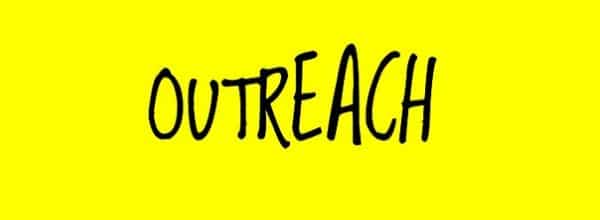I’m an anxiety-ridden stress ball 90% of the time. Graduate school only amplifies my nervous energy, and it’s a struggle. However, recently, while I rushed to catch a bus, I had a life altering experience using a mental technique called “reframing”
From “Flipping Out” to Flipping the Switch to “Cool”
It rained heavily. I balanced my umbrella in the crook of my arm while rummaging in the book bag claustrophobically attached to my front. I pulled out a soggy veggie wrap I snagged from a graduate seminar earlier and wolfishly attacked its damp, pita body. In a few minutes, the bus would pull up and I would be forced to wait four more hours to eat. Despite torrential rain and the time crunch I faced, I was deliriously joyful. It was a stark contrast to the out of breath, near-tears person I had been moments before.
That’s because I successfully reframed my perspective. Reframing, that is, taking how you think about something and transforming it to be more positive and useful, is an immensely powerful tool. It’s used by cognitive therapists to help people rework mental habits from adding to their problems to, instead, giving them power to conquer them.
What Reframing Does
To understand how to reframe your thoughts, first, think of your mind as the inside of a house. Windows on the walls let you see outside. Outside, that’s reality. You never see reality directly – only through windows that continually appear and disappear. Windows pop up subconsciously most of the time. A window’s frame, whether cracked and paint-peeling, or smooth and attractive, changes how we experience everything outside. Frame types are determined by our assumptions, values, and mental state.
In graduate school we balance so many things. On top of that, we’re supposed to have something resembling a personal life. It can be overwhelming. All of these events, tasks, and responsibilities feel like they are being thrust upon us by some outside, ill-meaning graduate deity. Windows pop up left and right, and very easily without conscious attention, they can have pretty threatening frames.
They don’t have to.
Becoming a Reframing Pro
I know. I sound like that annoying friend who always says “just look on the bright side”. If it were that easy, wouldn’t we have done it by now?! It isn’t easy…but it’s trainable. The tricky part is doing it in a way that feels authentic to you and practicing.
It’s certainly not as simple as saying to yourself “I love doing this” when you’re doing something stressful. It takes focus, clarity, and self-awareness. While I can’t tell you how to acquire those particular skills, I can give you some guidance by describing how reframing eased my stress about eating a soggy pita in a downpour.
Identify the Stressor
I had a very detailed conversation with myself. First, I identified what I felt (panic) and why I felt it (have too much to do and not enough time). Then, I took a hard look at things crammed into this time (run to bus, eat wrap fast, doc appointment, and meeting). I identified one thing in particular that made me feel frantic (eat wrap fast) and looked at what made me feel I had to do that (don’t want to pay for food at the meeting).
Examine All Other Options
Next, I focused on any other options, however much I didn’t like them (buy food). I then examined underlying reasons those options didn’t work for me (I have a wrap, and I hate spending money). Finally, I speculated on the outcome of these alternatives. Then I gently asked myself if I could let go of my aversion to spending money to give myself mental relief.
Freedom to Choose
Using this logical breakdown of what I was feeling, my assumptions, and other options, I realized that spending $7 on food to feel peace was actually a bargain. Until I reframed, my frantic juggling act was totally subconscious. I felt I had to juggle – no other options existed. But through reframing, I realized that there WERE other options. I just didn’t give them a second thought before. Critically processing what to do, I decided that I simply wanted the wrap.
Even though I did not change my behavior, I now felt happier, more content, and empowered. My schedule was still busy, but now I had chosen it after weighing all options.
The wrap tasted amazing in the rain.
Everything Can Use a New Frame
This powerful experience led me to reframe other things I noticed were causing stress. I dreaded a lab procedure and stress welled up within me. I asked myself why I was doing the assay. What was I hoping to get from it and how would I feel about a good outcome? The assay would answer an important question, I replied, and I felt excited at the idea of a good outcome. I became excited to do this assay and see the results. Bam! Stress and resistance gone. Nothing changed about my situation but the way I saw it.
Much like when we critique a scientific a research article, reframing is looking at underlying assumptions and questioning them. Most importantly, never make it personal. It’s really important to validate your feelings, no matter how silly you think others would find them. When it works, the relief is amazing!
Try a detailed, objective conversation with yourself about something stressing you out. Let me know in the comments how it went!





